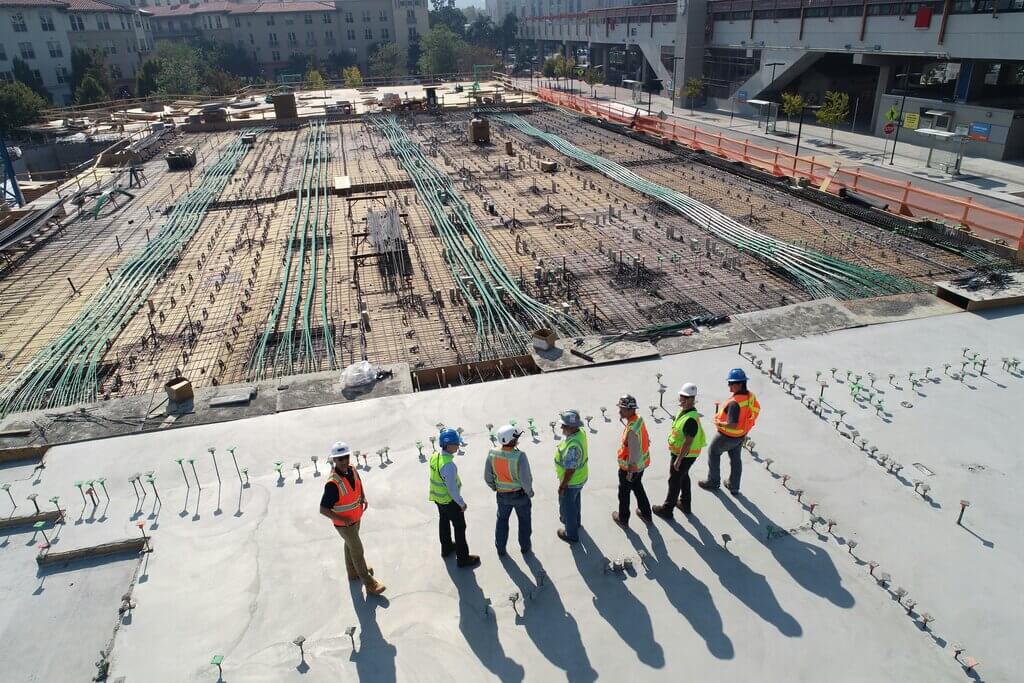What is the Certificate of Registration (CR)?
The Certificate of Registration is a crucial document that developers of real estate properties must obtain from the Department of Human Settlements and Urban Development (DHSUD) before selling any units. For buyers, this certificate is important to check before buying.
The DHSUD, formerly known as the Housing and Land Use Regulatory Board (HLURB), is the Philippine government’s executive department in charge of housing and associated development in the country. The certificate shows that a particular development has undergone a comprehensive review process that examines the project’s viability and the developer’s competence in executing it. The DHSUD Certificate of Registration ensures that the project’s structure and features, such as the technical and architectural details, adhere to the government’s standards and regulations.
Purpose of the DHSUD Certificate of Registration
The purpose of the DHSUD Certificate of Registration is to ensure a thorough and comprehensive application process for real estate projects, adhering to the requirements mandated by Philippine law. This certification is a crucial step in conducting due diligence, providing a clear understanding of the project and all parties involved. Foreigners can secure a seamless and successful real estate endeavor by obtaining the Certificate of Registration.
DHSUD requirements for Certificate of Registration
As a developer, you must adhere to specific requirements to apply for a DHSUD Certificate of Registration in the Philippines. Below is a list of the DHSUD requirements for the Certificate of Registration:
1. Maps and drawings
- A Certified True Copy of the Transfer Certificate of Title (TCT) or Original Certificate of Title (OCT) from the Register of Deeds (RD). Ensure it is stamped and bears the RD’s seal or security marking.
- The following are mandatory for projects that extend more than 20 individual titles and do not match the requirements listed above:
- A photocopy of all TCTs.
- A certification bearing a seal or security mark from the relevant RD, containing details like the area covered by each land title, the name of the registered owner(s), the number of TCTs or OCTs from which the title is derived, lot, and block numbers, PSD/PSU/PCS numbers, and a list of all claims and uncancelled encumbrances (if any).
- Electrical designs and specifications must be approved by the local franchise holder and signed and sealed by a certified electrical engineer.
- The Master Deed, including the Declaration of Registration and Declaration of Restrictions, must be accurately annotated in the property’s title(s) to get the DHSUD Certificate of Registration.
- A Certified True Copy of the mentioned title(s) from the Register of Deeds is to be submitted.
2. Business and financial documents
- A certified copy of the original, duly audited balance sheet signed and issued by an official authorized by the applicant must be submitted.
- Articles of Information (partnership or association) granting permission to the applicant to transact in real estate, specifically in land and unit development and sales.
- Public offering and distribution of the said project may involve any advertisement, brochure, circular, communication, or prospectus approved by the board.
- A sample copy of the Contract to Sell is required for the public offering of lots, units, or both to get the DHSUD Certificate of Registration.
3. Authorizations and affidavits
- A Sworn Registration Statement with either:
- A pro-forma affidavit expressing the willingness to make changes that could affect the Contract to Sell will be produced if the project name needs to be modified.
- A Certified True Copy of Environmental Compliance Certificate (ECC) or Certificate of Non-coverage (CNC), whichever is applicable from the Department of Environment and Natural Resources (DENR).
- A Zoning Certificate issued by the Regional Office of the DHSUD.
- A Certified True Copy of the Department of Agrarian Reform (DAR) conversion order, unless the property is already designated for residential, commercial, industrial, or similar occupancies.
- The National Water Resources Board’s (NWRB) approval to operate a deep well and conduct a water resistivity test.
- Water potability test results from concerned agencies such as Maynilad are required to obtain the DHSUD Certificate of Registration.
4. Building permit
- If the TCT’s issued date is more than one month before the application, an affidavit from the owner certifying that the property is free from claims and encumbrances is required.
- A deed from the registered owner demonstrating the applicant’s apparent ability to sign and receive documents or other comparable proof of power is required if the applicant is not the owner.
- If the project or a portion of it is mortgaged, the following affidavits must be submitted:
- Affidavit of undertaking to submit the title.
- A mortgagee’s certification regarding the loan’s outstanding balance and amortization schedule.
- Mortgage of contract.
- Affidavit of the undertaking of the mortgagor.
- A business departing from its intended purpose must obtain authorization from the Securities and Exchange Commission (SEC) and the relevant government agency to develop and sell the project to get a DHSUD Certificate of Registration.
Costs for the DHSUD Certificate of Registration
The costs for the Certificate of Registration depend on the type of housing, below is an overview of the cost per housing type:
- Economic housing: ₱ 720 ($12.59)
- Socialized housing: ₱ 420 ($7.35)
- Subdivision: ₱ 2,888 ($50.51)
- Condominium: ₱ 2,880 ($50.37)
Get a Certificate of Registration from DHSUD in the Philippines
Getting a DHSUD Certificate of Registration is necessary to engage in real estate development and sell properties legally. It is the same process as obtaining a DHSUD license to sell real estate. Here are 11 steps on how to get a Certificate of Registration from the DHSUD in the Philippines.
Step 1: Filing
To start the application process for a DHSUD Certificate of Registration, the applicant must fill out the DHSUD application form with all the necessary documents. A records officer from the Records Section (RS) will then check the completeness of the documents. Once the application is complete, it will be forwarded to the Regional Director’s Office (RDO), where a records officer will log and endorse the documents to the Technical Services Group (TSG) for evaluation. This initial filing process typically takes about one day.
Step 2: Evaluation and pre-publishing
After filing, the processor will evaluate the application’s compliance based on the requirements. If any deficiencies in standards and guidelines are found, a Notice of Deficiency in Requirements will be issued. The processor will complete or fill out the pro forma notice that is intended to be published. The pro forma notice could be a draft or template notice that must be filled in with relevant information before publication. It usually takes one to three days.
Step 3: TSG evaluation
The head of the TSG will evaluate and initial the documents before forwarding them to the RDO. This is to ensure the documents meet the necessary standards or requirements before they are passed on. The evaluation process typically takes about one day.
Step 4: Back to the records section
The records officer from the RDO will then forward the evaluated documents back to the records section. It ensures that the evaluated documents are correctly filed and stored in the appropriate location within the records section. This may take two to three days to complete.
Step 5: Mailing of notice to publish
After the records officer at the RDO (Revenue District Office) has completed a thorough review of the Notice to Publish in the records section, they will mail the Notice to Publish to the applicant. A Notice to Publish is a public notification issued by a government agency to inform the public or interested parties of the property. It generally takes two to three weeks.
Step 6: Public and pre-inspection
Upon receiving and publishing the Notice to Publish, the applicant will submit an Affidavit of Publication and coordinate with the inspector or processor to schedule a site inspection for the DHSUD Certificate of Registration. The public and pre-inspection typically takes 17 days.
Step 7: Registration and inspection
Following the site inspection and publication, the processor will receive an Affidavit of Publication. If all compliance requirements have been met for two consecutive weeks from the last day of publication, the processor will consider the project officially registered. An inspector will then conduct a site inspection to determine the extent of development and calculate the performance bond and processing fee required for the DHSUD Certificate of Registration. The inspection process generally takes one to two days.
Step 8: Performance bond and fee
The inspector will complete the pro forma letter or advice on the performance bond and fee, evaluating and initialing the document. This typically takes one to two days.
Step 9: TSG evaluation
The head of the TSG will review and assess the documents. Once the evaluation is completed, the head of the TSG will then proceed to sign the documents. A records officer from the RDO (Records Department Office) will forward the signed documents to the records section. This evaluation phase takes one to two days.
Step 10: Order of payment
The applicant will post a performance bond and submit the necessary documents certifying the bond. A records officer from the RDO will receive the documents and prepare an Order of Payment (OP). The applicant will then pay the corresponding processing fee, with the cashier issuing an Official Receipt (OR) to get the DHSUD Certificate of Registration. This payment process generally takes one day.
Step 11: Performance bond evaluation and CR awarding
Following the payment, the processor will evaluate the performance bond’s acceptability and prepare the DHSUD Certificate of Registration and the executive brief. The head of the TSG will review and sign these documents before they are transferred to the records section and release the Certificate of Registration to the applicant. This process usually takes three to four days.
Obtain the DHSUD Certificate of Registration
Own Property Abroad can assist in obtaining a DHSUD Certificate of Registration in the Philippines. We provide expert guidance, ensuring all necessary documentation is prepared accurately. Our expert team understands local regulations and requirements, helping streamline the application process.
Whether you are a foreign national or a local resident, our experts can help you successfully obtain a DHSUD Certificate of Registration for your property in the Philippines. For detailed assistance, please leave your name and email in the form below or email us at [email protected].
Frequently Asked Questions (FAQs)
What is the new name of HLURB?
The new name of HLURB, or the Housing and Land Use Regulatory Board in the Philippines, is the Department of Human Settlements and Urban Development (DHSUD).
What are the requirements for HLURB License to Sell?
The HLURB or DHSUD License to Sell requirements include applying for a Certificate of Registration with the supporting documents and submitting the application to the Regional Office of the Department of Human Settlements and Urban Development (DHSUD).
Where can I find the DHSUD application form?
You can find the DHSUD Certificate of Registration application form on the official website of the Department of Human Settlements and Urban Development (DHSUD).








8 Responses
Hello, ask ko lang po paanu po kung naka rehistro na kami sa hlurb, need pa po ba namin mag apply ulit sa dhsud.? At need din po ba namin kumuha ng panibagong certificate under ng dhsud
?
Hello Vanessa! If you are already registered with HLURB, you will need to update your registration under DHSUD, as it replaced HLURB. You may need to secure a new certificate under DHSUD to comply with the latest regulations. It’s best to check with the DHSUD office in your area to confirm the specific requirements for your case.
Good pm po, gusto ko po sana mag apply sa pabahay Ng ating pangulo
Kasi Hindi ko po kayang makabili Ng bahay dahil sa Hindi sapat Ang kita Ng aking Asawa Isang contraction at maliit at Hindi sapat kung mangungupahan Ng bahay,pambayad sa kuryente tubig, kaya Hindi po talaga Ako makaipon pambili Ng bahay,Minsan Asawa ko maglakad nalang papasok kasi Wala na pamasahe Ang layo layo Ng nilalakad nya,ganun din po Minsan Ang anak ko papasok sa school Minsan maglakad din kasi walang pamasahe,kaya gusto ko
Kaya gusto kung maka apply,paano po ba mag apply po,thank you po
Hello! You can apply for government housing through the National Housing Authority (NHA), especially if you’re struggling financially. Visit your barangay hall or city hall, explain your situation, and ask about the requirements for socialized housing. Usually, you’ll need to provide valid ID, proof of income, and a written explanation of your need for housing. I hope this helps you and your family find more secure living conditions.
Are there policy of DHSUD that requires HOA to limit the numbers of HOA members once submitted the orignal total numbers of members. Example, we have submitted an original total numbers of 111 members but it happens that there is a new registrant of 3 members. Is it legal to accept them or need an approval from DHSUD before we can accept them. Thanks to your prompt reply.
Hi Allan, generally, homeowners’ associations (HOAs) submit their membership list to DHSUD during registration. If there are new qualified homeowners, they can usually still be accepted as members even after the original list has been filed. However, it’s advisable to check your HOA’s by-laws and confirm with DHSUD if prior approval is required for additional members to avoid compliance issues.
Anong certification po need kapag mag apply sa meralco, residential area po.
Hi Mich, for a residential Meralco application, you typically need a valid government-issued ID, proof of ownership or lease (like a land title, deed of sale, or lease contract), a barangay clearance, and a certificate of final electrical inspection (CFEI) from the local city or municipal engineering office. The CFEI is usually the main certification required before Meralco can energize your service.